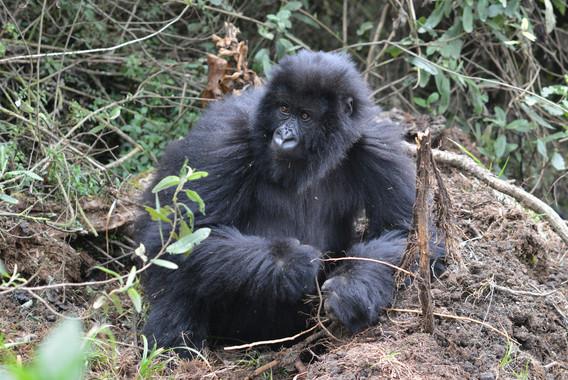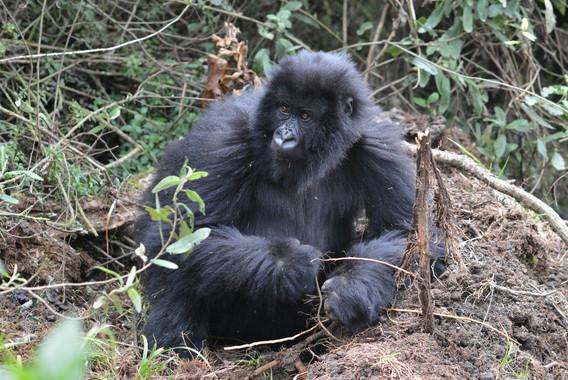
Mountain gorillas from Volcanoes National Park in Rwanda eat up to 30 kilos of plants a day and their diet is highly varied in a habitat that is becoming increasingly fragmented as a result of illegal hunting and deforestation. For the first time, a study shows how dental morphology adapts to the food that is available. The information from the wear on their teeth is used to identify specimens that disappear.
Mountain gorilla (Gorilla beringei beringei) populations only remain in the southern part of the Virunga Mountains, between Rwanda, Uganda and the Democratic Republic of the Congo, and Bwindi National Park in Uganda. These large apes, considered endangered by the Red List of Threatened Species, are threatened by poaching, diseases carried by tourists who explore the brush to search for them and by deforestation caused by a high population density.
In order to protect these gorillas, the conservation of their habitat -where the bulk of their diet can be found, consisting of wild celery or bamboo, elmleaf blackberry and roots- is key. For this reason and for the first time, a team of scientists, led by primatologist Jordi Garbany, has analysed how age and feeding habits affect these primates that dedicate a great deal of their time to eating up to 30 kilos of plants per day.
The new study, published in the American Journal of Physical Anthropology, reveals that these feeding habits contribute to dental wear in gorillas, and that the dental morphology of this animal adapts to the foods available in its habitat. This demonstrates that animals become accustomed to the ecological conditions around them.
"This data is very important since, if at some point we find a gorilla that has died, we can estimate its age using its teeth and, perhaps, identify it among gorillas that have disappeared from study or tourist groups," points out Garbany, who works for the Center for the Advanced Study of Human Paleobiology at the George Washington University (USA).
The results were obtained by calculating the percentage of dentine present in the remains of the gorillas identified. They determined their dates of death, ages and lifestyles thanks to the efforts carried out by the Dian Fossey Foundation's Karisoke International Research Center. Through the analysis, the researchers discovered that the abrasive particles present on the roots speed up enamel loss in the molars, regardless of the gorilla's age.
According to this groundbreaking research, these large apes present less dental deterioration than other species, such as their counterparts from the lowlands. Furthermore, "we have seen that mountain gorillas present very low wear compared to other primate species. Thus, a change in diet, for different reasons, could affect the quality of life of the gorillas, as has already been documented for other primates," emphasises the researcher.
Improving the protection of mountain gorillas
The study draws on data available regarding the feeding patterns of mountain gorillas -gathered since 2001- which confirms that these sorts of studies aid in understanding the evolution of this animal.
"The teeth and their morphology are directly related to their functionality. Low deterioration, even lower than that of other populations such as the western lowland gorilla, shows that they are adapted to relatively soft diets, heavily based on leaves and ground vegetation, but not to shelled nuts or hard seeds," concludes the Spanish researcher.
The scientists recommend launching projects to analyse the mineral composition of the ground, its relationship with the abrasive effect of the vegetation and to create a catalogue of the foods that cause this deterioration in order to better understand the adaptations of this animal.
###
References: Jordi Galbany et al.: "Tooth Wear and Feeding Ecology in Mountain Gorillas From Volcanoes National Park, Rwanda". American Journal of Physical Anthropology.2016.
Media Contact
SINC
[email protected]
34-914-251-802
@FECYT_Ciencia
http://www.fecyt.es/fecyt/home.do





